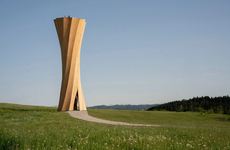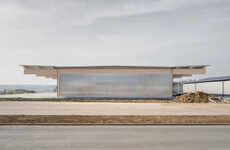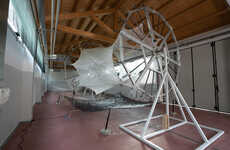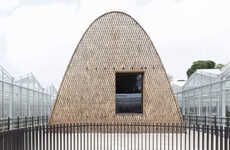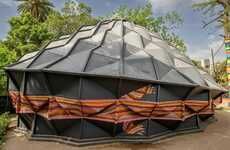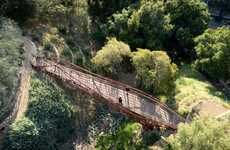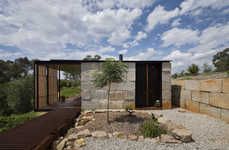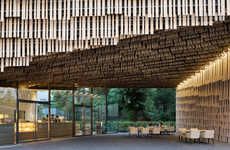
The Landesgartenschau Exhibition Hall Takes on an Odd Form
Jamie Danielle Munro — June 24, 2014 — Art & Design
References: icd.uni-stuttgart.de & contemporist
The Landesgartenschau Exhibition Hall in Germany was built using robotics controlled by the Institute for Computational Design. The resulting structure looks similar to a cocoon, or even a peanut depending on how one looks at it.
The material used to build the piece was made from robotics, which resulted in the lightweight timber used to put the entire structure together. The best part about this approach is how sustainable he wood actually is. Because it was tested and experimented with, much of it is very sustainable and easy to recreate.
According to The Contemporist, "the project demonstrates the new opportunities that arise from the integration of computational design, simulation and fabrication methods for performative and resource efficient constructions made from the locally available and renewable resource wood." Hopefully these experiments will continue in the future.
The material used to build the piece was made from robotics, which resulted in the lightweight timber used to put the entire structure together. The best part about this approach is how sustainable he wood actually is. Because it was tested and experimented with, much of it is very sustainable and easy to recreate.
According to The Contemporist, "the project demonstrates the new opportunities that arise from the integration of computational design, simulation and fabrication methods for performative and resource efficient constructions made from the locally available and renewable resource wood." Hopefully these experiments will continue in the future.
Trend Themes
1. Robotic-made Architecture - Disruptive innovation opportunity: Integration of robotics in architecture construction to create sustainable and resource-efficient structures.
2. Computational Design - Disruptive innovation opportunity: Application of computational design and simulation methods to optimize construction processes and material usage.
3. Resource Efficient Constructions - Disruptive innovation opportunity: Developing construction methods that utilize locally available and renewable resources for sustainable and eco-friendly buildings.
Industry Implications
1. Robotics - Disruptive innovation opportunity: Incorporating robotics in construction industry to automate and enhance building processes.
2. Architecture - Disruptive innovation opportunity: Adopting computational design techniques in architecture to improve efficiency and sustainability in building design.
3. Wood Manufacturing - Disruptive innovation opportunity: Using robotic manufacturing techniques to produce lightweight and sustainable timber materials for construction projects.
2.3
Score
Popularity
Activity
Freshness


